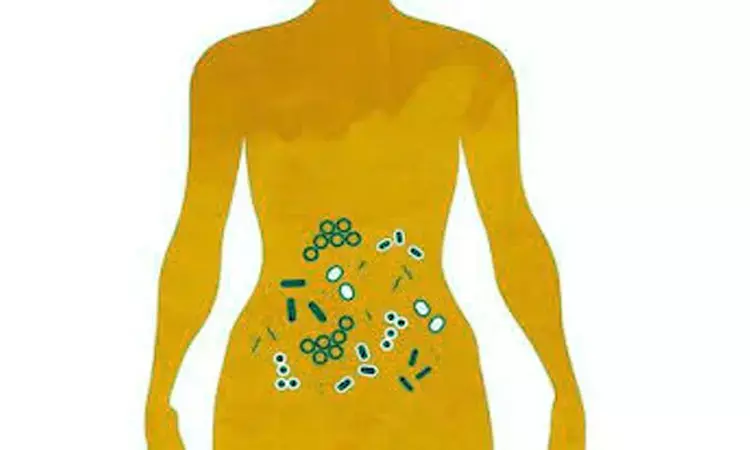- Home
- Medical news & Guidelines
- Anesthesiology
- Cardiology and CTVS
- Critical Care
- Dentistry
- Dermatology
- Diabetes and Endocrinology
- ENT
- Gastroenterology
- Medicine
- Nephrology
- Neurology
- Obstretics-Gynaecology
- Oncology
- Ophthalmology
- Orthopaedics
- Pediatrics-Neonatology
- Psychiatry
- Pulmonology
- Radiology
- Surgery
- Urology
- Laboratory Medicine
- Diet
- Nursing
- Paramedical
- Physiotherapy
- Health news
- Fact Check
- Bone Health Fact Check
- Brain Health Fact Check
- Cancer Related Fact Check
- Child Care Fact Check
- Dental and oral health fact check
- Diabetes and metabolic health fact check
- Diet and Nutrition Fact Check
- Eye and ENT Care Fact Check
- Fitness fact check
- Gut health fact check
- Heart health fact check
- Kidney health fact check
- Medical education fact check
- Men's health fact check
- Respiratory fact check
- Skin and hair care fact check
- Vaccine and Immunization fact check
- Women's health fact check
- AYUSH
- State News
- Andaman and Nicobar Islands
- Andhra Pradesh
- Arunachal Pradesh
- Assam
- Bihar
- Chandigarh
- Chattisgarh
- Dadra and Nagar Haveli
- Daman and Diu
- Delhi
- Goa
- Gujarat
- Haryana
- Himachal Pradesh
- Jammu & Kashmir
- Jharkhand
- Karnataka
- Kerala
- Ladakh
- Lakshadweep
- Madhya Pradesh
- Maharashtra
- Manipur
- Meghalaya
- Mizoram
- Nagaland
- Odisha
- Puducherry
- Punjab
- Rajasthan
- Sikkim
- Tamil Nadu
- Telangana
- Tripura
- Uttar Pradesh
- Uttrakhand
- West Bengal
- Medical Education
- Industry
Duodenal Microbiota and Enteropathy linked to Stunted growth in Children: NEJM

According to the reports of a study, recently published in The New England Journal Of Medicine, a causal relationship has emerged between growth stunting and components of the small intestinal microbiota and enteropathy, offering a rationale for developing therapies that target these microbial contributions to Environmental enteric dysfunction.
Environmental enteric dysfunction (EED) is a disease of the small intestine for which the causative factors are poorly understood. Histopathological changes included diminution in the number and height of intestinal villi with associated loss of absorptive surface area, disruption of the epithelial barrier, and a chronic inflammatory infiltrate.
Stunting is associated with poor developmental outcomes, including reduced intellectual capacity and an impaired response to oral vaccines.
To examine the role of the duodenal microbiota in the pathogenesis of EED and its relationship to stunting, researchers under R.Y. Chen, from the Edison Family Center for Genome Sciences and Systems Biology, initiated the Bangladesh Environmental Enteric Dysfunction (BEED) study involving young children who live in an urban slum (Mirpur) in Dhaka.
This study had two components: an interventional phase, which was designed to test whether a nutritional intervention administered for 3 months on 110 young children (mean age, 18 months), would improve linear growth in children between the ages of 12 and 18 months who were stunted or at risk for stunting, and a diagnostic phase involving children who did not have a response to the nutritional intervention and who subsequently underwent EGD with duodenal biopsy.
They quantified the levels of 4077 plasma proteins and 2619 proteins in duodenal biopsy samples obtained from these children. The levels of bacterial strains in microbiota recovered from duodenal aspirate from each child were determined with the use of culture-independent methods. Also, researchers obtained 21 plasma samples and 27 fecal samples from age-matched healthy children living in the same area. Young germ-free mice that had been fed a Bangladeshi diet were colonized with bacterial strains cultured from the duodenal aspirates.
On data analysis, the following facts emerged.
- Of the bacterial strains that were obtained from the children, the absolute levels of a shared group of 14 taxa (which are not typically classified as enteropathogens) were negatively correlated with linear growth (length-for-age z score, r=−0.49; P=0.003) and positively correlated with duodenal proteins involved in immunoinflammatory responses.
- The representation of these 14 duodenal taxa in fecal microbiota was significantly different from that in samples obtained from healthy children (P<0.001 by permutational multivariate analysis of variance).
- Enteropathy of the small intestine developed in gnotobiotic mice that had been colonized with cultured duodenal strains obtained from children with EED.
"Our results emphasize the need for techniques for performing imaging and sampling of the small intestine that are less invasive than those currently available in routine practice." said the team.
For the full article click on the link: 10.1056/NEJMoa1916004
Primary source: The New England Journal O F Medicine
Dr Satabdi Saha (BDS, MDS) is a practicing pediatric dentist with a keen interest in new medical researches and updates. She has completed her BDS from North Bengal Dental College ,Darjeeling. Then she went on to secure an ALL INDIA NEET PG rank and completed her MDS from the first dental college in the country – Dr R. Ahmed Dental College and Hospital. She is currently attached to The Marwari Relief Society Hospital as a consultant along with private practice of 2 years. She has published scientific papers in national and international journals. Her strong passion of sharing knowledge with the medical fraternity has motivated her to be a part of Medical Dialogues.
Dr Kamal Kant Kohli-MBBS, DTCD- a chest specialist with more than 30 years of practice and a flair for writing clinical articles, Dr Kamal Kant Kohli joined Medical Dialogues as a Chief Editor of Medical News. Besides writing articles, as an editor, he proofreads and verifies all the medical content published on Medical Dialogues including those coming from journals, studies,medical conferences,guidelines etc. Email: drkohli@medicaldialogues.in. Contact no. 011-43720751


